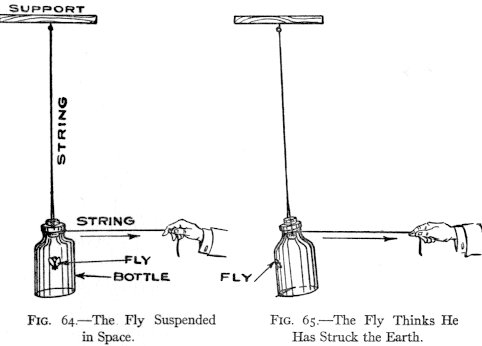Experimental Proof
Today, we wonder why people do experiments. The University of Houston's College of Engineering presents this series about the machines that make our civilization run, and the people whose ingenuity created them.
I visited beautiful, baroque St. Isaak's Cathedral in Leningrad back in 1972. The Soviet Union was calling it a museum, not a church. They'd hung a huge Foucault pendulum from the dome -- right in the center. There was a certain violence in the way the pendulum cut across the delicate lines of the architecture. A lady in an official suit lectured squadrons of little children about the experiment. She explained how the pendulum holds its path while Earth itself turns under it -- how the pendulum only seems to move.
The Foucault pendulum is a dramatic demonstration of Newtonian mechanics. But this wasn't science; this was a not-so-subtle propaganda lesson for kids. It was a sidewise way to tell them that life begins and ends in the scientific mechanics of our being -- and that the state is somehow the bedfellow of science.
Many fancy experiments confirm what we already know. For example, a Stanford group has created an experiment to check tiny changes in the direction of the axes of four gyroscopes. They're in a satellite orbiting directly over Earth's poles. The axes will point toward the star Rigel, in Orion. As they move through Earth's gravitational field, the axes will shift, just a little, as our gravity fields bend space -- bend the line pointing toward Rigel.
Now, there're many reasons for doing the experiment. Fortunately, when you get to the fine print, you learn that there are aspects of relativity theory that're still incomplete. But what the public hears is that the experiment will prove Einstein's theory, and many people are oddly content with the notion that we're trying to verify something we already know is essentially true.
So we're back to that Foucault pendulum experiment, which is no experiment at all. What it is is a demonstration. Experiments sometimes do reveal things dramatically. In the early nineteenth century the French physicist Poisson attacked Fresnel's theory of light. If Fresnel were right, he said, you'd see a spot of light, under certain conditions, right in the middle of the shadow cast by a disc. And that was silly. Then Fresnel did the experiment, and the white spot appeared. It surprised him as much as it did Poisson.
Experiments serve many purposes. We do have to look at nature before we can form theories to describe it, and no theory will stand up to even one counterexample. In 1887, the famous Michelson-Morely experiment was meant to show how fast light traveled in the ether, which supposedly filled space. The experiment actually demolished the ether theory when it gave the wrong kind of result.
Once we're confident about a theory, experiments do start looking like propaganda. We do many experiments to sell our ideas to other people. That's an important part of the business of science. But always remember: The experiment that's really worth doing is the one that can give us a result we don't want to see.
I'm John Lienhard, at the University of Houston, where we're interested in the way inventive minds work.
(Theme music)
The Fresnel/Poisson argument is described in some detail by Kuhn, T. S., The Structure of Scientific Revolutions (Second ed.). Chicago, IL: University of Chicago Press, 1970.
This is a greatly revised version of Episode 155.

An "Experiment"
(from The Boy Scientist, 1925)